How To Prevent Separation Anxiety In Dogs
Separation anxiety in dogs occurs when a dog becomes hyper attached to their humans and fear being alone.
Sadly, it is a common problem that can be very difficult to manage.
Like many behavioural problems, prevention is far better than cure.
In this article, we teach you techniques that you can use to help prevent your dog from developing extreme attachment leading to anxiety and assist with management if it develops.
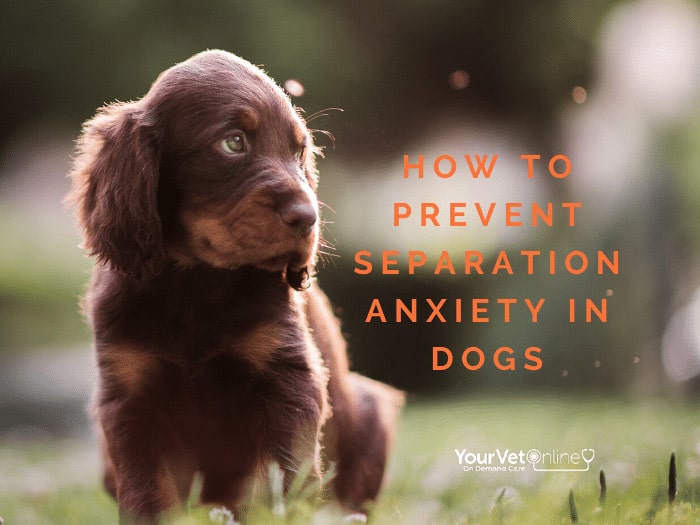
[easy-social-share]
What Is Separation Anxiety In Dogs?
Separation anxiety is the common term for a behavioural problem where a dog becomes highly stressed when they do not have contact with their owner or other people.
Many of these dogs struggle to remain calm when alone and can become quite destructive.
While separation anxiety does have an inherited component, how you train your dog also has a lot of influence on how they develop.
This dog behaviour problem is a very difficult problem to overcome and treat, therefore we recommend that we try to prevent the occurrence in the first instance.
What Signs Do Affected Dogs Show?
Signs that a dog may be struggling with being left alone can vary in intensity and for many dogs, can sadly get worse over time.
For some dogs, the problem can become so bad that their owner may choose to rehome or surrender them to rescues.
Consequently, this condition is one of the leading reasons for dogs to be surrendered.
Signs that your dog may be developing depression and stress when left alone include:
- Being glued to your side, not letting you out of their site
- Howling, whining and barking
- Chewing, eating and scratching at walls and furniture
- Shaking, trembling, panic-stricken
- Digging up the garden
- Urinating and defaecating in inappropriate areas
- Drooling and panting especially when suspicious of you leaving
- Pacing or other obsessive behaviour
- Running away, scratching or biting especially when trying to confine them
Sometimes, signs are more subtle and difficult to pick up.
While these behaviours may be quite normal, if they are occuring frequently then you should be suspicious that there may be an issue:
- Freezing – they may look calm on the outside, but on the inside they are a ball of nerves
- Fidgeting, licking, stretching and yawning – when you see these signs all at once, particularly related to you getting ready to leave, you can be suspicious that your dog is not coping and they are stressed.
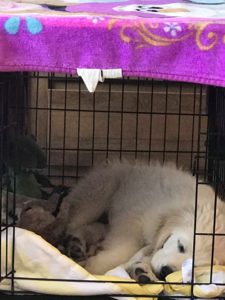
Initially keep the door of the crate open so that the crate becomes a happy, safe place.
How To Prevent Your Dog Stressing?
The most important thing you can do as an owner of a new puppy is to be proactive and teach your dog that it’s ok to be alone.
This process is not fast, you will need to be patient and practice multiple times per day. As they say, little and often is best.
Get Your Dog Used To A Crate or Kennel
This means that your pup or new dog needs a crate, kennel or sheltered pen where they can spend time alone whether you are still at home, or if you’ve left the house. 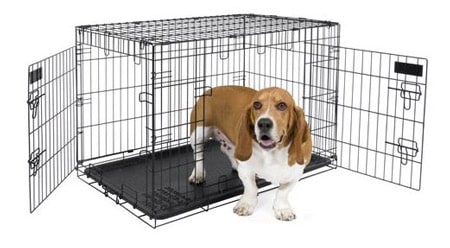
Purchase a crate with a sturdy floor and two doors that open.
You want to slowly get your dog used to you not always being within their sight.
This is not something that you can do overnight, it does require preparation.
In our crate training dogs article you can learn how to get your dog used to spending time in their crate.
The key is to only reward good behaviour.
When your dog is quiet, not whining and being good, then they get your attention. You must never give attention when they are making noises.
Video: Tips For Crate Training Your Puppy
Use Enrichment Toys
To help your dog settle alone, you may use food toys such as a kong or snuffle mat or leave them with their favourite toys.
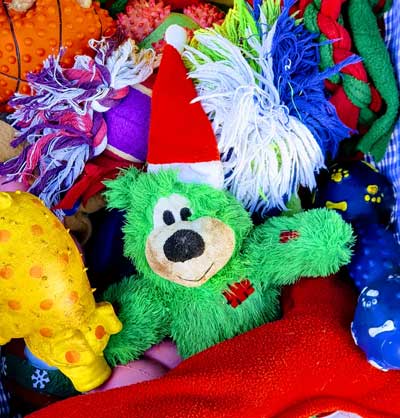
Keep a selection of toys to give your dog, but not all at once.
Some dogs enjoy toys that encourage them to use their brain and work for a reward, while other dogs may prefer a chew toy or just a teddy to sleep with.
Each dog is different, you need to work out what meets their needs the best.
It’s best to only provide a small number of toys at any one time or your dog can become overwhelmed. You might put the toys on a weekly rotation to keep interest high.
Consider Dog Appeasing Hormone Adaptil
To help with this process it is sometimes useful to use a dog appeasing pheromone such as Adaptil.
Adaptil mimics the pheromones that a mother dog releases to calm and comfort her pups. It can be purchased as a diffuser or as a collar and will help your dog (of any age) feel calm and less anxious.
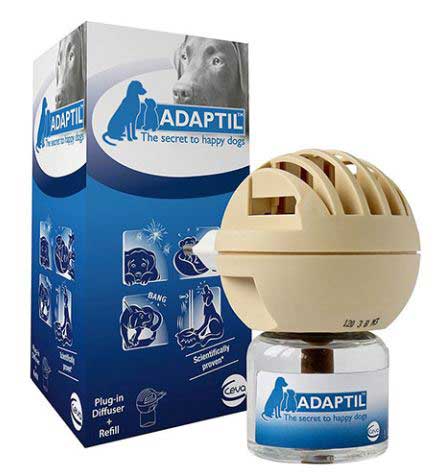
Adaptil is a dog appeasing pheromone that helps your dog to feel calm and less anxious.
Training For Calm Behaviour When You Leave
The key to all this training is:
- Only reward calm behaviours and avoid reprimanding your dog
- Make sure you ignore any bad behaviour (or unwanted behaviour) such as whining
- Mix up your routine when you are leaving so that your dog doesn’t anticipate that you are going
- pick up car keys, but don’t leave
- put on shoes and go and sit on the couch
- blow dry your hair and then have breakfast
- Avoid excitable home-comings and reunions
- when you arrive home ignore your dog when they jump or bark. Once they are calm and sitting, then you can pat them.
The best way to train your dog to accept you leaving is the sit and stay command. As they learn that you return when they remain calm, you can increase the distance you move to and include being out of sight.
Once they are happy to do this, then start with very short departures, you may just go to the mailbox.
As your dog gets used to these short breaks and is remaining calm, increase the time spent away.
Video: How To Use Calming Music For Separation Anxiety
For more help with training your pup or older dog, get in touch with our vets who can help you with a program.
[easy-social-share]





Leave A Comment